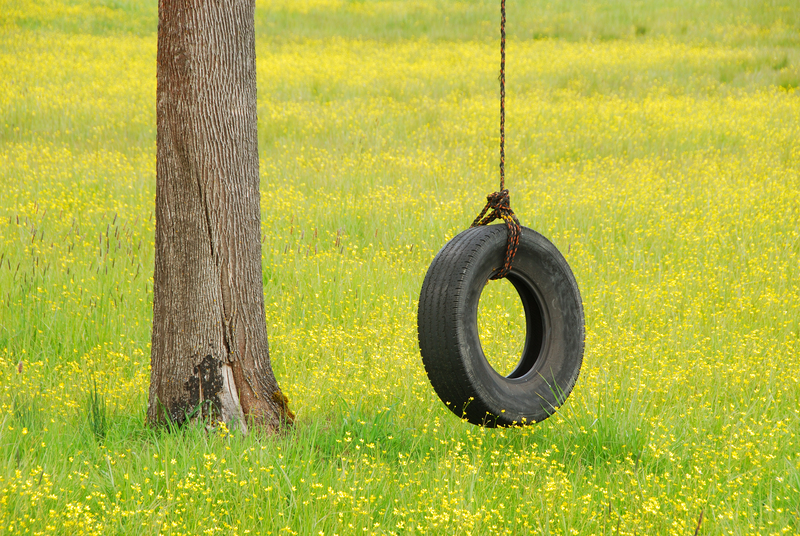Eco-Innovations for Tackling Plastic Waste: A Comprehensive Guide
Plastic waste is an escalating global crisis with far-reaching environmental, economic, and health consequences. As the world produces over 400 million tons of plastic annually, only about 9% is recycled, leaving the vast majority polluting our landfills, oceans, and ecosystems. This urgent issue has inspired innovators, scientists, and entrepreneurs to develop groundbreaking solutions. In this in-depth article, we explore the most promising eco-innovations for tackling plastic waste, their real-world applications, and how you can support these transformative efforts.

Understanding the Plastic Waste Problem
Plastic Pollution: The Scope of the Crisis
- Microplastics: Tiny particles infiltrating soil, water, and food chains
- Wildlife impact: Marine animals and birds ingest or become entangled in plastics
- Accumulation: Floating garbage patches, such as the Great Pacific Garbage Patch
The durability and versatility of plastic, while advantageous for manufacturers, create an environmental paradox--plastic products may be used for mere minutes, but persist in the ecosystem for centuries. This challenge calls for eco-conscious strategies and innovative technologies to manage plastic debris responsibly.
Key Eco-Innovations for Tackling Plastic Waste
1. Biodegradable and Compostable Plastics
One of the leading innovations in plastic waste management is the development of biodegradable alternatives. These materials are designed to break down more quickly than conventional plastics, reducing landfill accumulation and environmental toxicity.
- Plant-based plastics: Derived from corn starch, sugarcane, cassava, and other renewable resources
- Polylactic Acid (PLA): A commonly used compostable polymer in packaging and disposable cutlery
- PBS (Polybutylene succinate) and PHA (Polyhydroxyalkanoates): Bioplastics that break down in marine environments
While biodegradable plastics present promising advantages, a holistic approach--considering sourcing, production, decomposition rates, and waste management infrastructure--is needed for maximum effectiveness.
2. Advanced Recycling Technologies
Traditional mechanical recycling methods struggle to process contaminated or mixed plastics efficiently. Recently, advanced eco-innovations have emerged to address these limitations:
- Chemical recycling: Breaks down plastics into basic molecules for re-manufacturing high-quality products, even from mixed or dirty plastic streams
- Pyrolysis and gasification: Converts plastic waste into fuel, hydrocarbons, and new plastic feedstocks
- Enzymatic and microbial recycling approaches: Use genetically engineered enzymes or bacteria to "digest" plastics efficiently
These revolutionary processes offer a pathway to a circular economy--where plastics are reused, recycled, and repurposed unlimited times, drastically reducing demand for virgin materials and new waste generation.
3. Plastic Waste-to-Energy Solutions
In regions where recycling is challenging, converting non-recyclable plastics into energy is gaining traction. Waste-to-energy innovations include:
- Incineration facilities with energy capture: Producing electricity and heat while minimizing emissions
- Plasma gasification: Vaporizes plastics at extremely high temperatures to generate synthesis gas for power and industrial applications
While plastic-to-energy options do not eliminate all emissions, they help reduce landfill usage and recover some value from otherwise problematic materials. The key is optimizing technical performance and managing potential air pollution risks.
4. Plastic-Eating Microorganisms and Enzymes
Cutting-edge research is harnessing nature's recyclers--microbes and enzymes--to break down plastics previously considered non-biodegradable. Exciting developments include:
- Bacterial enzymes: Ideonella sakaiensis produces PETase, capable of digesting common PET plastic
- Fungi species from landfills and waste dumps that output plastic-busting enzymes
- Genetically engineered "super-enzymes" designed to accelerate degradation rates
These eco-innovative biological solutions promise to revolutionize how we manage plastic pollution, potentially transforming waste into harmless byproducts or even valuable resources for industry and agriculture.
Upstream Eco-Innovations: Redesign, Rethink, and Reduce
5. Reusable and Refillable Packaging Models
One of the most effective ways to address plastic waste is to prevent it from being created. Leading companies are adopting innovative reusable packaging models that replace single-use plastics with durable options:
- Return and refill stations for household products (soaps, cleaners, food items)
- Reusable takeout containers and drinkware in cafes, restaurants, and events
- Bulk bins and zero-waste grocery solutions
By adopting these waste-minimizing strategies, businesses and consumers can help drive a significant reduction in disposable plastics and encourage a cultural shift toward sustainability.
6. Plastic-Free Product Design
Eco-design is leading to consumer goods made from innovative, natural materials as alternatives to plastic:
- Edible packaging crafted from seaweed, rice, or potato starch
- Mushroom-based cushioning instead of styrofoam
- Textiles from bamboo, hemp, or recycled ocean plastics
Redesigning everyday items using eco-friendly materials reduces reliance on fossil fuel-derived plastics and cuts waste at the source, setting a precedent for industries worldwide.
Smart Technologies for Plastic Waste Management
7. AI and Robotics for Plastic Waste Collection and Sorting
Accurate sorting of plastics is vital for efficient recycling, but manual processes are labor-intensive and error-prone. Smart robots and artificial intelligence (AI) now enable precise material identification and separation:
- Sensors and cameras distinguish between plastic types for high-speed sorting
- AI-powered drones and robots remove plastics from beaches, rivers, and oceans autonomously
- Waste tracking systems using blockchain enhance transparency and accountability across the supply chain
These technological breakthroughs boost collection rates, reduce contamination, and make it economically viable to recycle even low-value plastics.
8. Ocean Plastics Capture and Cleanup Technologies
Oceans absorb millions of tons of plastic waste annually. Several eco-innovative projects are emerging to tackle aquatic plastic pollution head-on:
- The Ocean Cleanup: AI-guided floating barriers collect debris from ocean gyres
- River interceptors: Solar-powered platforms capturing plastics before they reach the sea
- Marine vacuum cleaners: Autonomous vessels skimming surface plastic in ports and harbors
These solutions are crucial to restoring marine environments and preventing microplastics from circulating through food webs.
Policy, Partnerships, and Consumer Action
9. Extended Producer Responsibility (EPR) and Policy Innovations
Smart regulation is a powerful catalyst for eco-innovation in plastic waste management. Key policy tools include:
- Extended Producer Responsibility (EPR): Manufacturers are responsible for post-consumer packaging
- Plastic bans or taxes: Discourage single-use plastics in favor of sustainable materials
- Deposit return schemes: Incentivize recycling via refundable deposits on bottles and containers
Governments worldwide are adopting these strategies to encourage investment, innovation, and accountability across the plastics value chain.
10. The Power of Collaboration and Grassroots Initiatives
Large-scale impact requires cross-sectoral partnerships, community action, and public education. Notable initiatives accelerating progress include:
- Public-private collaborations (corporations, NGOs, academia) developing pilot projects for plastic alternatives
- Citizen science and cleanup days mobilizing thousands to remove plastic from nature
- Educational campaigns raising awareness and shifting consumer behavior
Whether you're a business leader, policymaker, educator, or individual, your actions matter in the fight against plastic pollution.
How Can You Support Eco-Innovations for Tackling Plastic Waste?
What Can Businesses and Consumers Do?
- Choose products with minimal or recyclable packaging
- Support brands using biodegradable, compostable, or recycled materials
- Participate in local plastic cleanup and recycling programs
- Advocate for smart plastic policies in your area
- Educate others about the importance of eco-innovations
Support Innovative Startups and Nonprofits
- Invest in or donate to companies and organizations advancing novel solutions
- Share success stories, raising the profile of impactful eco-innovation
The Future of Eco-Innovations for Tackling Plastic Waste
The fight against plastic pollution is catalyzing a new generation of eco-innovative solutions--integrating science, technology, design, and collective action. While the challenge is daunting, the innovative spirit driving change is stronger than ever. Large multinationals, agile startups, governments, and communities are all leveraging their unique strengths to transform the plastics industry and safeguard our planet for future generations.
By adopting eco-innovations for tackling plastic waste, we can shift toward a circular economy that protects ecosystems, supports sustainable livelihoods, and reduces humanity's environmental footprint. Now is the time to act--support pioneering solutions, rethink plastic in your life, and become part of the collective effort to create a cleaner, greener world.

Frequently Asked Questions About Eco-Innovations for Tackling Plastic Waste
What are the most promising new technologies for plastic waste management?
Some of the most exciting innovations include enzymatic recycling, chemical depolymerization, AI-powered sorting robots, and bioplastics from renewable resources. These offer scalable pathways to dramatically cut down plastic waste.
How can biodegradable plastics help solve the plastic waste problem?
Biodegradable plastics break down faster than conventional plastics and reduce long-term environmental harm. However, it's essential to ensure they decompose fully in real-world conditions and do not contaminate traditional recycling streams.
What role do individuals play in plastic waste innovation?
Consumers influence markets by choosing sustainable products and supporting eco-friendly brands. Individuals also drive policy change through advocacy and reduce their own plastic footprint via mindful choices and participation in community initiatives.
Are there challenges to scaling up eco-innovations for plastic waste?
Yes. Challenges include high initial investment costs, limited infrastructure, regulatory barriers, and consumer awareness. Overcoming these requires cooperation between governments, industries, innovators, and the public.
Where can I learn more or get involved?
Plenty of NGOs, local groups, and global initiatives (like Plastic Pollution Coalition, The Ocean Cleanup, Break Free From Plastic) welcome volunteers, donations, and business partnerships. Reliable resources also include academic research centers and government sustainability portals.
Conclusion: Innovations Leading Us Toward a Plastic-Free Future
The world's plastic waste crisis is pressing but solvable. With eco-innovations for tackling plastic waste spanning every stage of the product lifecycle--from design to disposal, from collection to conversion--the possibilities are endless. As innovation continues, our collective responsibility is to support, accelerate, and scale these solutions for a sustainable, plastic-free future.